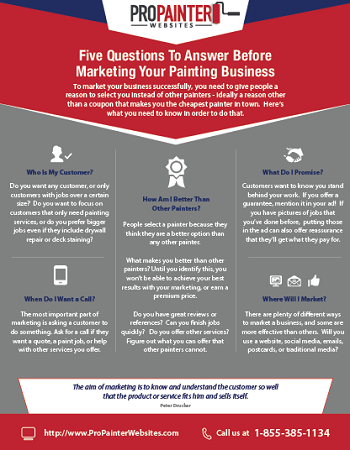Comprehending Seasonal Influences On Commercial Exterior Painting: Essential Understanding For Success
Comprehending Seasonal Influences On Commercial Exterior Painting: Essential Understanding For Success
Blog Article
Article By-Fox Bagger
When you're intending a business exterior paint project, seasonal elements can make or break your outcomes. You'll want to consider just how temperature level and moisture effect paint application and drying out times. Picking the best period can guarantee your paint sticks appropriately and lasts longer. However which seasons are genuinely the best for this kind of job? Let' house painters perth out the crucial elements that can affect your task's success.
The Influence of Temperature on Paint Application
When you're intending a business exterior painting project, the temperature level can considerably impact exactly how well the paint adheres and dries.
Ideally, you intend to paint when temperature levels range in between 50 ° F and 85 ° F. If it's also cool, the paint may not heal effectively, resulting in problems like peeling off or splitting.
On the other hand, if it's as well warm, the paint can dry out too promptly, protecting against appropriate bond and resulting in an unequal finish.
You ought to likewise think about the moment of day; morning or late afternoon supplies cooler temperatures, which can be extra favorable.
Always inspect the producer's referrals for the certain paint you're making use of, as they often provide assistance on the excellent temperature range for optimal outcomes.
Humidity and Its Impact on Drying Times
Temperature level isn't the only environmental variable that affects your business exterior paint job; humidity plays a significant duty too. High moisture levels can reduce drying times significantly, impacting the general high quality of your paint work.
When the air is saturated with dampness, the paint takes longer to heal, which can cause concerns like poor adhesion and a greater danger of mildew development. If you're repainting on a particularly humid day, be planned for extended delay times between coats.
It's vital to keep track of neighborhood climate condition and strategy as necessary. Preferably, go for humidity degrees in between 40% and 70% for optimal drying out.
Maintaining these factors in mind guarantees your project remains on track and delivers a long lasting coating.
Best Seasons for Commercial Exterior Painting Projects
What's the best time of year for your business outside paint projects?
Springtime and early autumn are generally your best bets. During these periods, temperatures are mild, and humidity degrees are commonly lower, producing perfect problems for paint application and drying.
Prevent summer season's intense heat, which can create paint to dry as well swiftly, bring about inadequate adhesion and finish. In a similar way, winter season's cold temperature levels can hinder appropriate drying out and treating, taking the chance of the durability of your paint job.
Go for days with temperature levels in between 50 ° F and 85 ° F for optimal results. Remember to check the local weather prediction for rainfall, as damp conditions can spoil your job.
Preparation around these aspects ensures your paint job runs smoothly and lasts much longer.
Verdict
To conclude, preparing your business external painting jobs around seasonal factors to consider can make a significant difference in the outcome. By scheduling job during the excellent temperature levels and moisture levels, you'll guarantee better bond and drying times. Remember to watch on local weather forecasts and choose the right time of year-- spring and very early fall are your best options. Taking additional reading will assist you attain a sturdy and expert coating that lasts.
